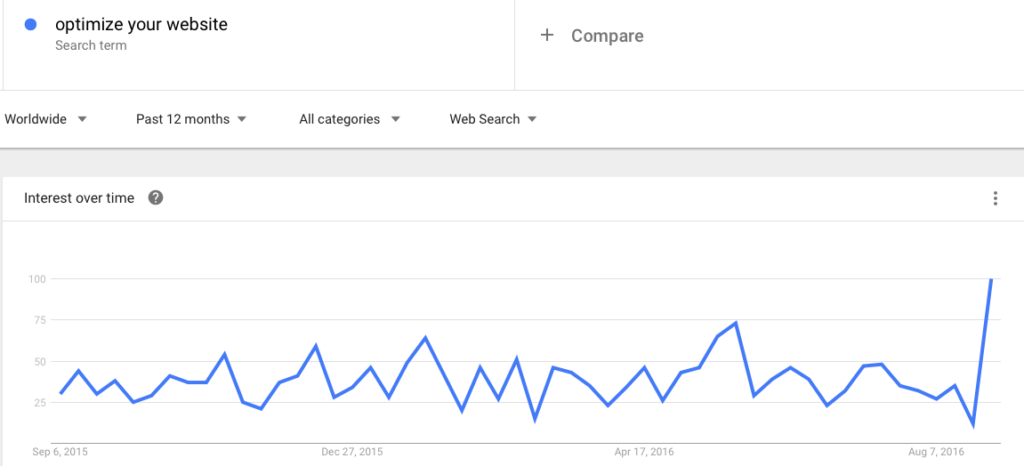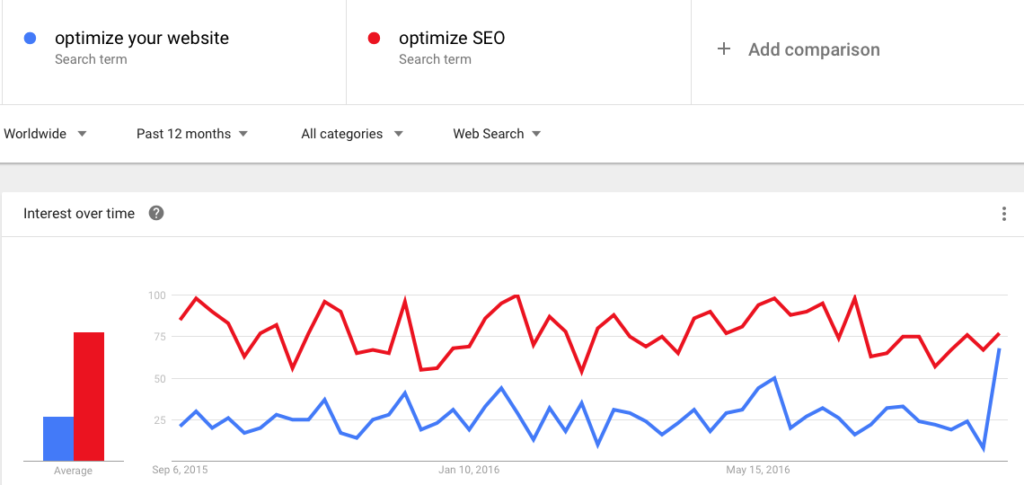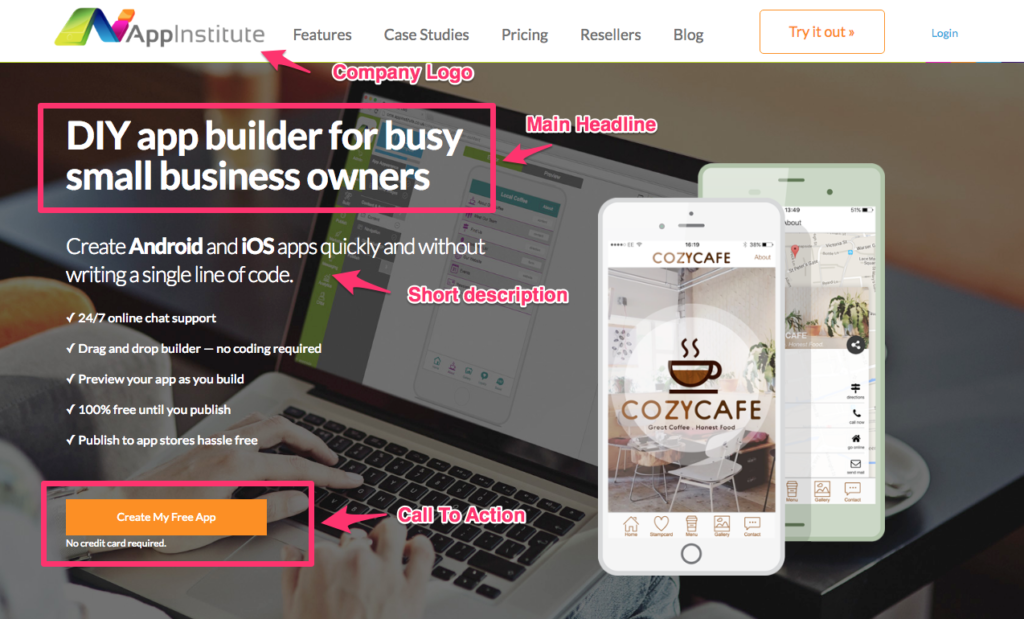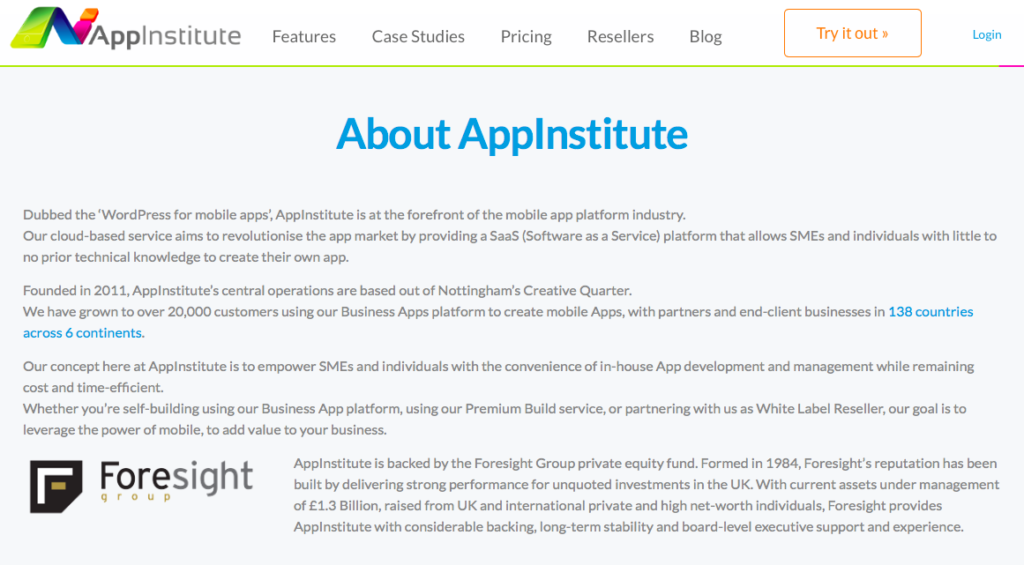

Image courtesy of the Search Engine People Blog (Flickr)
Websites used to be static things, sitting out on the internet waiting for some someone to find it. That’s no longer the case, though: the front and back-end design of a website has evolved way beyond that—not only is the content much more dynamic, but a website’s relevance (which determines search engine ranking) is, too. Maybe you’re finding that out the hard way. Perhaps you’ve designed and published your website, but have found that searching for it in Google isn’t working out the way you’d hoped. You’re probably looking for some tips on optimising your website to improve your search rankings. Maybe you even googled the term “optimise website SEO” and, if we did our jobs right on this end, found yourself here from the search results page. You’re welcome.
And thank you! Your website should be just one part of a larger digital marketing strategy, but it’s an important one. Let’s get right to it, then, and show you some ways you can optimise your website and drive traffic where you want it.
Titles are Important
The focus of your site should always be top-notch content, but when it comes to SEO, a good title is the fastest way to a user’s web browser. I’m not talking about the big letters at the top of a given page that act as a heading for the content to follow. No, the title is the string of words that appear at the top of your browser window (or in a browser tab). More importantly, the title appears as a big blue clickable link on a Google search results page, like so:

This means that the title not only has to satisfy Google’s requirements for ranking high on any given search, but it has to be something that will entice a user to click through to your website. When you craft a title, you have two distinct audiences, then: Google’s search algorithms, and the people doing the searching.
A Quick Diversion into Keywords: To satisfy both of these audiences, you’ll need to do a little research. Find out what keywords people are using to get to the kind of content you’re providing. For a small business on a shoestring budget, you can use Google Trends to figure out what might work best for you. Note that Trends doesn’t actually give hard numbers on how many searches are being conducted on a word or phrase—the trending graphs the tool provides are showing relative values, so you’ll want to come up with at least 2, if not more, possible keyword phrases to see which would be the best choice. Here’s what that looks like in practice:

Image courtesy of Google Trends (http://google.com/trends)
This is the result that came back when I searched the trend for the phrase “optimise your website” (I’m doing my search in the U.S., so pardon my Z in the image above) for the past 12 months. This doesn’t tell you how many searches were done; instead, it shows you relative performance to its most popular point, which occurs right at the end of the graph. That little peak above the date “April 17, 2016” is right around the “50” line, which means the phrase was searched about half as many times that week than its most popular point at the end. This doesn’t really tell us much, except that for most of the past year, interest in this phrase steadily at a small fraction of what is its peak.
But look what happens when we add the phrase “optimise SEO” to compare:

Image courtesy of Google Trends (http://google.com/trends)
We can see that, relative to “optimise your website,” this is a more searched phrase by a large margin. What’s more, we can see that there is a sustained interest in this phrase over the year—it hits the 100% marker six separate times, and spends a good deal of time over 75%, none of which is accomplished by our first term. Ideally, you’d want to compare 3 or 4 variations at a time to get a more complete picture, but for our purposes here this is enough to say that we’ll choose “optimise SEO” as our title’s focus keyword, even if it’s linguistically redundant (the O in SEO stands for Optimisation, remember).
And now, back to our title: You want it to be short and to the point. Some people say your keywords should be the first words. Some say that everyone else is doing that, so you should make yours different. Ultimately, what matters most is that it’s short enough to be completely visible in the search results (roughly 65 characters), and that it grabs the user’s eyes. For our example, let’s say we’re using these keywords for the main page of a digital marketing company’s website. Something like
We Optimise SEO So You Don’t Have To – “Company Name”
is perfect. We’ve included a highly searched keyword phrase (known as a long-tailed keyword), described the service offered, and included the company name. That’s enough information to get a user to click through to your site.

Describe Your Business Effectively
Your website probably has an About Us page, where you’ve gone ahead and created a little narrative about your company—something that tells an origin story and positions you as a leader in your field. The About Us page gives you some room to properly introduce your company to site visitors, but people need to visit your site first before they can read it. Lucky for you, there’s a way to create a short description that’s included in your search results. You’ve got 156 characters to say what you need to at the bottom of your search listing.
Normally, Google just retrieves the 156 characters of text from the page it found as part of the result. Using the “meta description,” you can overwrite that text with something more useful. Like the title, you need to be concise and to the point, and it’s helpful to include your focus keyword in this part of the text:

If you’re using WordPress as your platform, you can play around with what your search listing will look like (and get suggestions on ways to improve each page’s SEO) with Yoast’s plugin. If you’re not using WordPress, this handy preview tool has you covered.
Don’t Forget All the Other Pages
Your website is made up of several pages, and each one has to be optimised separately. While it’s a good idea to include your main page title’s focus keywords wherever it makes sense site-wide, you don’t want to have the same keywords for every page. This kind of fudging the system can actually have adverse effects on your rankings. It’s better to treat each page as its own separate entity with unique content to offer. Also, now is as good a time as any to point out that optimising your page isn’t just about search rankings and targeted keyworded content. Your website serves a purpose, and that is to generate new business. So you’ll want to make sure that all these pages you’re optimising serve that function. Of course, if your website is super extensive, this doesn’t mean you need to work on every page—it’s best to stick to the most important ones:

Main Page
For most people, the main page will be their first introduction to your business—make it count. Every bit of vital info that you need to communicate needs to be readily visible, above the fold—no scrolling required. It can probably go without saying—but I’m saying it anyway—you’ll want your business logo up top, a short headline that tells people what you do in big letters (this should ideally include your keywords), and a quick sentence or two clarifying your headline. Most importantly, though, you’ll want what’s known as a Call to Action (CTA). A CTA can take many forms, but most often it appears as a great big button that’s visible without scrolling. It can be used to get people to sign up for a newsletter, setting you up for more direct marketing communications. It can be a button that gets people shopping in your online store, if that’s the way you swing. The button can facilitate a user setting up an account with you to gain access to special offers. The CTA’s sole function is to convert website visitors into customers, subscribers, or leads.

About Page
I touched on this above, but try to go into a little more detail. The About Page is the place where you can really define your brand and position yourself as an authority in your industry. In addition to a little background story about the beginning of your business, this page gives you the chance to wax philosophic on your industry, and the unique way in which you address the needs of your customers. The end of your bio is a great place to put another CTA, or just put it right in your navigation menu so it’s always available.
Blog Page(s)
Your blog (and you do have a blog, yes?) can be thought of as two distinct entities you have to manage: its main page, with the feed of posts you’ve added over time; and every other individual post. Since the whole point of the blog is to bring people to your website, one insightful post at a time, the main page isn’t actually as important to optimise. You can focus on SEO, making sure appropriate keywords are in the page title, or alt-text of an image, but don’t go crazy here. Ideally, people are going to be landing on your blog through a specific post you’ve shared, and those are the pages you ought to be worrying about. Your focus keywords need to be specific to the topic at hand, and your posts need to be as informative and as entertaining this post you’re reading right now. That’s not an arrogant assertion, by the way. We’re near the end of the post, so if you’re still here you must be enjoying and getting value from it on some level. Beyond proper SEO-isation, though, blog posts are a great place to throw in more CTAs. Especially at the end of a post, because—again—if a reader makes it this far, they probably got something out of it. And if you were a company that, say, offered mobile App creation services, you’d want to trade on that credibility by putting a very specific CTA at the end of any post.
For more info on this: Check out our SEO Guide for Small Businesses
2 thoughts on “The Evolution of Your Website: How to Optimise It and Keep It Working For You”